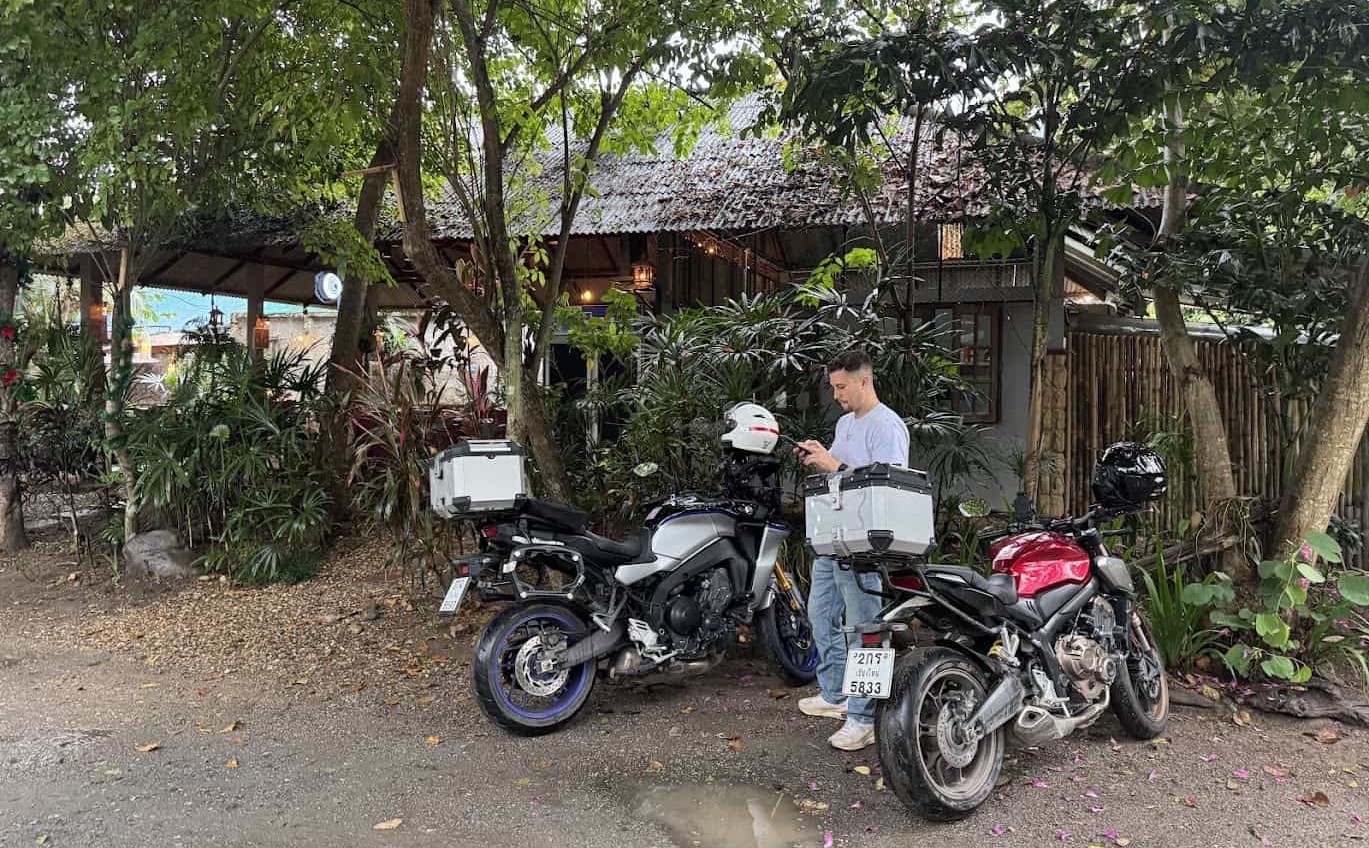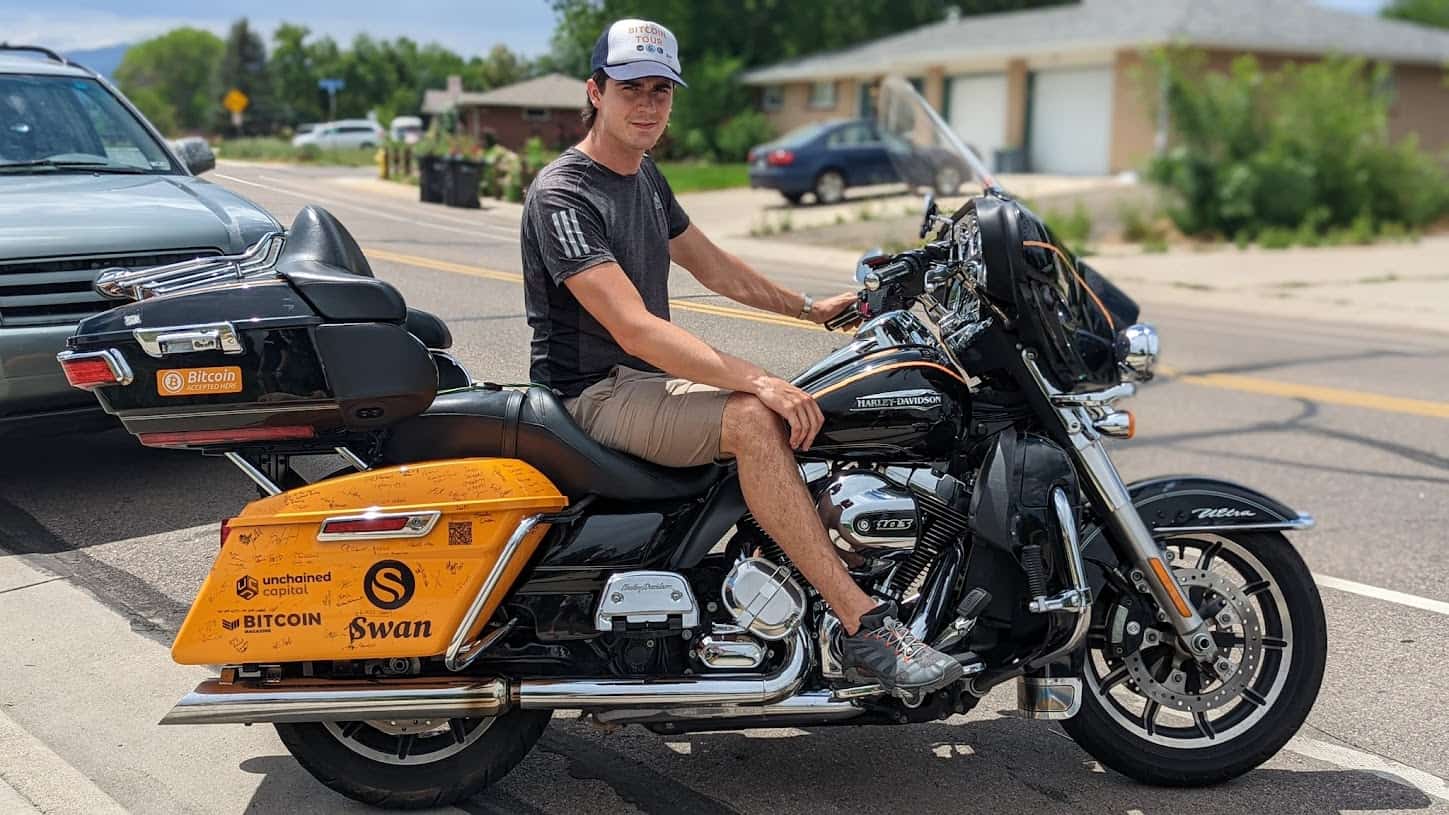
SR‑22 Motorcycle Insurance: The Real Story for U.S. Riders
left for contents
If you were led to believe that an SR‑22 is a special “motorcycle insurance policy,” you were mis‑informed.
Some so‑called guides tell riders an SR‑22 is a new kind of bike policy — wrong. Having an SR‑22 doesn’t mean you’re covered any better — it just means you’re under extra state supervision. You can’t skip the SR‑22 simply by registering your bike in a state that doesn’t use SR‑22 forms.
Every month I hear from riders who’ve been told they need a mysterious “SR‑22 motorcycle insurance.” In reality, the SR‑22 is not some exotic policy; it’s a government form that certifies you meet your state’s minimum liability requirements.
After a DUI, uninsured crash or license suspension, the state may require your insurance company to file this certificate on your behalf. When you attach an SR‑22 to your motorcycle policy, the DMV keeps tabs on your coverage. Let a payment lapse and your license can be pulled faster than your rear tire after a burnout.
Below is a quick comparison of the key points. If you’re in a hurry, this table gives you the takeaways you need before digging into the nitty‑gritty.
| Key question | What it means for riders | Details to watch |
|---|---|---|
| What is an SR‑22? | A certificate of financial responsibility that proves you carry at least your state’s minimum liability coverage. It isn’t a stand‑alone motorcycle policy. | Your insurer files the form with the DMV. Most states call it an SR‑22; Florida and Virginia use an FR‑44 (higher liability limits). |
| How does it connect to motorcycles? | In most states you can attach an SR‑22 to a motorcycle policy. This simply adds the required form to your existing coverage. | Florida won’t allow an SR‑22/FR‑44 on a motorcycle policy, so riders there often need a non‑owner or auto policy to satisfy the requirement (sr22-insurance-policies.com). Verify with your DMV whether a bike‑only filing is accepted. |
| Typical cost impact | Filing the SR‑22 is cheap – usually around $25 to $50 once. The real cost comes from being labeled “high‑risk”: premiums can jump 40–100 % or more (breatheeasyins.com). | Average SR‑22 motorcycle insurance runs ~$18 per month for minimum liability and ~$80 for full coverage (moneygeek.com). Rates vary dramatically by state and bike type. |
| States with special rules | Most states require an SR‑22 after certain violations. Delaware, Kentucky, Maryland, Minnesota, New Jersey, New Mexico, New York, Oklahoma, Pennsylvania, Rhode Island and West Virginia generally don’t require SR‑22 filings (sr22adviser.com). | Florida and Virginia use an FR‑44 for DUI offenses with higher limits (libertymutual.com). Some states like Florida won’t let you file an SR‑22 on a motorcycle policy (sr22-insurance-policies.com); others may require longer filing periods (three to five years). |
| What to ask your insurer | Do you offer SR‑22 filings on motorcycle policies? Will adding the SR‑22 change my current rate? How long must I carry it? What happens if my coverage lapses? | Not all carriers file SR‑22s (libertymutual.com). Ask if a non‑owner policy is cheaper when you don’t own a bike. Confirm your coverage meets or exceeds state minimums. Stay ahead of renewal dates to avoid suspension. |
What an SR‑22 Really Is
Let’s start by shredding a myth: an SR‑22 isn’t insurance. It’s a certificate of financial responsibility your insurer files with your state’s DMV. Liberty Mutual puts it plainly: an SR‑22 is “a specific form filed by your auto insurance company … [that] is proof you’re carrying the minimum amount of liability insurance your state requires”.

In other words, it’s paperwork confirming you meet the legal minimums — not a magic shield with extra coverage. Think of it like the DMV saying, “We don’t trust you, so your insurer has to vouch for you every month.”
SR‑22 vs. FR‑44
In most states, the SR‑22 is the go‑to certificate. Florida and Virginia have an extra layer called the FR‑44, used after DUI convictions. The FR‑44 demands higher liability limits — usually $100,000 per person, $300,000 per accident and $50,000 in property damage (lawfran.com). The SR‑22, by contrast, typically verifies state minimums like $10,000 per person and $20,000 per accident. If your violation involves alcohol or drugs in these states, expect to carry an FR‑44 rather than a regular SR‑22, and expect your premiums to spike accordingly (acceptance.com).
Why You Might Hear “SR‑22 Insurance”
Because insurance companies are the ones filing the SR‑22, many marketers refer to “SR‑22 insurance.” The phrase is misleading. All you’re actually buying is a standard liability or full‑coverage policy with a certificate attached. Don’t let a sales agent upsell you on a special “SR‑22 motorcycle policy.”
As Liberty Mutual says, an SR‑22 is not insurance. It doesn’t provide additional protection; it simply flags you as a higher‑risk rider. Your existing bodily injury and property damage limits remain the same. Paying more because you need an SR‑22 is like paying extra rent because the landlord hired a babysitter to watch you — you don’t get a nicer apartment; you just get more oversight.
SR‑22 & Motorcycles: How They Connect
If you only ride motorcycles, you might assume that an SR‑22 doesn’t apply to you. Wrong. States that use SR‑22s apply them to drivers, not vehicles. Whether you ride a Harley, Ducati or custom chopper, the DMV can demand proof of financial responsibility.

Here’s how the connection works:
- Most states allow an SR‑22 on a motorcycle policy. According to Liberty Mutual, “Most states offer SR‑22s for motorcycle insurance.” That means your insurer files the certificate with your bike policy, and the DMV monitors that policy for lapses.
- Florida doesn’t. The motorcycle and scooter SR‑22 Q&A from Wessell Insurance notes that Florida will not attach an SR‑22 or FR‑44 to a motorcycle policy. If you’re a Florida rider, you typically need to either (1) carry a separate non‑owner SR‑22 policy on a car you don’t own, or (2) buy an auto policy (even if you don’t drive a car) and attach the filing there. It’s a weird loophole that punishes bikers for being two‑wheeled.
- Some insurers won’t file SR‑22s at all. Liberty Mutual warns that not every insurer is willing to offer an SR‑22. Smaller companies sometimes avoid high‑risk filings, so you may need to switch carriers.
- State filing periods vary. Many states require you to maintain the SR‑22 for three years, but some only ask for a year (Connecticut, North Dakota) or two years (Texas, Iowa). Others may extend it up to five years for severe violations (sr22adviser.com). Check your DMV letter to know exactly how long you’re on the hook.
Bottom line: If your state allows it, attaching the SR‑22 to a motorcycle policy keeps everything under one roof. You maintain the same liability limits you already have, but your insurer also files the paperwork and reports any lapses. In states that don’t permit bike‑only filings, you’ll need to get creative with a non‑owner or auto policy to satisfy the requirement.
Why a Motorcycle Rider Might Need an SR‑22
Riders often assume they’re in the clear because they “only ride on the weekends” or “don’t have a car.” Unfortunately, the DMV doesn’t share that sentiment.

You may need an SR‑22 for any of the following reasons:
- DUI/DWI or reckless driving convictions. A drunk‑riding conviction is a fast track to an SR‑22 or FR‑44. The Acceptance Insurance blog notes that FR‑44 filings in Virginia and Florida are imposed for serious violations like DUI and require higher liability coverage. Most other states use an SR‑22 for DUI or major speeding (e.g., drag racing through a school zone).
- Driving without insurance. If you cause an accident while uninsured, courts often require an SR‑22 to reinstate your license. Even a minor fender‑bender can trigger the requirement if you weren’t carrying the state‑mandated minimums at the time.
- License suspension or revocation. When your license is suspended (for instance, too many points), you may be ordered to obtain an SR‑22 before getting it back. It acts like a probation officer, ensuring you maintain coverage during your probationary period.
- Repeated traffic violations. Accumulating multiple speeding tickets or at‑fault crashes in a short period may also trigger an SR‑22. The SR‑22 Adviser notes that some states penalize drivers for several moderately serious violations over a short period.
- Non‑traffic issues. In some states, failure to pay child support or other court‑ordered obligations can lead to an SR‑22 requirement. It’s rare, but it happens.
Remember: The SR‑22 applies to drivers, not vehicles. If you’ve committed one of these offenses on a motorcycle, car or scooter, your license is at risk. The state doesn’t care whether you ride a cruiser or a minivan — they just want proof you’re insured.
Typical Costs & Premium Impact for Motorcycle Riders
Now for the question everyone asks: How much does SR‑22 motorcycle insurance cost?

Let’s break it down:
- Filing fee: The actual SR‑22 filing fee is modest — typically $25 to $50. It’s a one‑time administrative charge your insurer pays to file the form. Some companies roll it into your premium; others charge it separately.
- Premium increases: The real cost comes from being labeled high‑risk. Breathe Easy Insurance notes that premiums for SR‑22 drivers often run $2,000 to $5,600 annually. That’s for auto policies; motorcycle premiums tend to be lower because bikes cause less property damage, but expect a significant bump relative to a clean record. On average, MoneyGeek’s 2025 analysis found SR‑22 motorcycle insurance costs around $18 per month for minimum liability and $80 per month for full coverage.
🧾 Want a clearer idea of what regular motorcycle insurance really costs? Check out our full breakdown of prices and rider tips in this article: How Much Is Motorcycle Insurance? Real Costs & Tips.
- Bike type matters: Wessell Insurance notes that cruiser‑style motorcycles generally have cheaper SR‑22 rates than sport bikes. High‑powered sport bikes can double your premium because insurers equate them with risk. If cost is a concern, a standard or cruiser may be the economical choice.
- State variations: Rates vary wildly by state. MoneyGeek’s table shows annual minimum‑coverage premiums ranging from $127 in Ohio to over $500 in California and Virginia. Full‑coverage costs range from $278 in Montana to $1,735 in Arizona. Add the fact that Florida won’t attach SR‑22s to motorcycle policies and you might need to buy a more expensive auto or non‑owner policy there.
- Duration: Plan on carrying the SR‑22 for three years in most states. Some states require only one or two years; others extend it up to five years for serious offenses. The longer you’re flagged, the longer you’ll pay elevated premiums.
What About Full Coverage vs. Liability Only?
As a rider, you’ll need at least the state’s minimum liability limits to file an SR‑22. That’s the baseline. Full coverage (adding collision and comprehensive) protects your bike from theft or crash damage, but it isn’t required for the SR‑22. MoneyGeek points out that full‑coverage SR‑22 motorcycle insurance averages $80 per month; minimum liability averages $18.
If budget is tight and you can tolerate the risk of replacing your own bike, liability‑only may make sense. Just remember: liability only means your bike isn’t covered — the policy pays only for damage you cause to others.
The Hidden Cost of Lapses
Here’s where many riders stumble: letting the policy lapse resets your penalty period.

Breathe Easy Insurance explains that coverage lapses can lead to extra penalties and extended SR‑22 requirements. If your insurer reports a lapse, the DMV may suspend your license or restart your SR‑22 clock.
Don’t make the mistake of canceling your policy early because you sold your bike — maintain coverage until the state tells you otherwise. If you stop riding, switch to a cheaper non‑owner policy rather than canceling outright.
🔧 Even if you keep your coverage active, a dead battery or blown fuse can still ruin a trip—protect yourself with motorcycle breakdown insurance.
What You Must Do & What to Ask Your Insurer
Navigating an SR‑22 is more paperwork than skill, but there are traps to avoid. Follow these steps:
- Read your DMV notice carefully. The letter will specify what form (SR‑22 or FR‑44), the minimum liability limits and how long you must file. It may also spell out whether a motorcycle policy is acceptable.
- Contact your current insurer. Ask if they provide SR‑22 filings on motorcycle policies. Not all do. If your carrier declines or raises your rates sky‑high, shop around.
- Confirm you meet or exceed state minimums. Your policy must carry at least the minimum liability limits required by your state. For Florida and Virginia FR‑44 filings, the minimums are much higher.
- Ask about the filing fee. It’s usually between $25 and $50. Some insurers waive it for existing customers; others charge monthly.
- Verify coverage start and end dates. Make sure the SR‑22 is filed before your DMV deadline. Once the required period ends, notify your insurer to remove the filing; it doesn’t disappear automatically.
🕒 Only need coverage for a few months or a single riding season? See how temporary motorcycle insurance can keep you compliant and save money.
- Set reminders for renewal. Keep track of payment due dates. A missed payment can cause a lapse and get your license suspended.
- If you don’t own a bike, consider a non‑owner policy. Non‑owner SR‑22 policies provide the liability limits you need without attaching to a vehicle. They’re typically cheaper than bike or auto policies, especially in states like Florida where motorcycle filings aren’t permitted.
When you talk to an insurance agent, be direct. Ask if they’re familiar with motorcycle SR‑22 filings in your state. Inquire whether bundling auto and motorcycle policies offers any discount. Don’t accept a one‑size‑fits‑all quote; high‑risk riders often save by comparison shopping.
Buyer’s Guide: Choosing the Right Motorcycle Policy With an SR‑22
Shopping for motorcycle insurance is already tricky; add an SR‑22 and it can feel like trying to torque a spark plug with a butter knife.

Use this buyer’s guide to streamline the process:
- Check your state’s filing rules. Does your state accept SR‑22 filings on motorcycle policies? States like Florida don’t, while most others do. If your state disallows it, look into non‑owner or auto policies.
- Confirm carrier willingness. Before getting a quote, ask if the insurer files SR‑22s for motorcycles. Some big players (Progressive, Geico, Dairyland) do; smaller regional carriers may not.
- Know your minimums. Each state sets its own liability thresholds. For example, California’s minimum is 15/30/5 ($15k bodily injury per person / $30k per accident / $5k property damage). If you’re in Florida or Virginia with an FR‑44, expect 100/300/50 limits. Your SR‑22 or FR‑44 must meet or exceed these.
- Decide on coverage type. Liability only is cheaper (around $18/month average) but leaves your bike unprotected. Full coverage (around $80/month) includes collision and comprehensive, protecting your bike from theft, fire or single‑vehicle crashes. If you ride year‑round or your bike is financed, full coverage may be prudent.
- Consider your bike type. Insurers rate sport bikes higher than cruisers. Wessell Insurance notes that sport bikes are more expensive to insure due to speed and theft risk. Riders who want lower rates might switch to a standard or cruiser while filing an SR‑22.

- Shop around and bundle. Use quote comparison tools or independent agents. MoneyGeek’s research found Progressive, Shelter and Geico often offer the lowest SR‑22 motorcycle rates nationwide. Bundling your bike with auto or renters insurance might unlock discounts, though bundling isn’t required.
💰 Looking to offset those SR-22 premiums? Learn smart, safe ways to cut your motorcycle insurance costs without losing coverage. Read our article: Cheap Motorcycle Insurance: Smart Ways to Save Safely.
- Ask about non‑owner policies. If you’ve sold your bike to save money during your SR‑22 period, a non‑owner policy still satisfies the DMV requirement at a lower cost. It provides liability coverage when you occasionally borrow or rent a motorcycle.
- Watch duration and cancellation rules. Most states require you to maintain the SR‑22 for three years. Cancelling early or missing payments can reset the clock and lead to license suspension. Once your term expires, confirm with the DMV and ask your insurer to drop the filing.
Misconceptions & Mistakes to Avoid
It’s easy to get tripped up by bad advice. Here are common myths and missteps to avoid:
- “An SR‑22 is a special kind of motorcycle insurance.” False. It’s a certificate your insurer files; nothing more.
- “Once I have an SR‑22, I’m fully covered.” Wrong. The SR‑22 doesn’t add coverage; it only proves you have the minimum required. If you want collision, comprehensive or higher liability limits, you must pay extra.
- “I can avoid an SR‑22 by registering my bike in a state that doesn’t require it.” Think again. If your violation occurred in a state that requires an SR‑22, that state’s DMV can suspend your license until you meet the requirement, even if you move. Many states also report SR‑22 requirements to others.
- “My motorcycle policy is automatically exempt.” Some riders believe bike policies are exempt because motorcycles aren’t mandatory in certain states. That’s not true. Most states require proof of financial responsibility after serious violations regardless of the vehicle.
- “I can let my policy lapse once my bike is in winter storage.” A lapse can reset your SR‑22 clock and lead to suspension. If you’re not riding, switch to a non‑owner policy or keep your liability coverage in force.
- “I only need the SR‑22 until the ticket is paid.” The SR‑22 term runs for a specified period (often three years), not until you pay fines. Removing it early without state approval can get your license re‑suspended.
Final Thoughts: Ride Informed, Not Afraid
If this article feels like tough love, that’s because I’ve seen too many riders get burned by bad advice. An SR‑22 is not the end of your riding life. It’s a bureaucratic hoop you jump through to get your license back. The real danger is misunderstanding what the SR‑22 is and failing to meet the requirements.

To recap:
- The SR‑22 is a form, not a policy. It proves you carry at least the minimum liability insurance required by your state. Florida and Virginia may instead require an FR‑44 with higher limits.
- It applies to riders, not machines. Most states allow the SR‑22 to be filed on a motorcycle policy. Florida does not, so riders there may need a non‑owner or auto policy.
- You might need one after serious violations. DUI/DWI, reckless riding, uninsured crashes or repeated offenses can all trigger an SR‑22 requirement.
- Costs vary. Filing fees are small (around $25–$50), but premiums rise because you’re considered high‑risk. Average SR‑22 motorcycle rates range from $18 per month (minimum) to $80 per month (full coverage), with big state‑by‑state differences.
- Stay vigilant. Choose a carrier that files SR‑22s for motorcycles, meet or exceed your state’s liability limits, set reminders for payments, and avoid lapses. Once your term ends, notify your insurer and DMV to remove the filing.
Navigating the SR‑22 maze isn’t fun, but it’s doable. As a fellow rider, my goal is to strip away the confusion and empower you to make smart decisions. Take the time to understand your state’s requirements, shop around for the best policy and keep your coverage active. With the right knowledge and a little diligence, you’ll clear this hurdle and get back to what matters — riding free and focused on the open road.
Related

Classic Motorcycle Insurance: Protect Your Ride’s Legacy
If your ride’s got history, it deserves protection to match. Classic motorcycle insurance keeps legends alive and riders worry-free.


